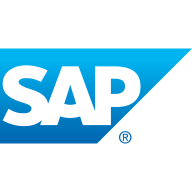

Find out what your peers are saying about Salesforce, IBM, SAP and others in Business-to-Business Middleware.
| Product | Market Share (%) |
|---|---|
| SAP Process Orchestration | 5.9% |
| OpenText Trading Grid | 4.5% |
| Other | 89.6% |


| Company Size | Count |
|---|---|
| Small Business | 8 |
| Midsize Enterprise | 3 |
| Large Enterprise | 26 |
OpenText Trading Grid (formerly GXS) is a unique global integration platform that enables and streamlines cross enterprise business processes. With extreme flexibility and a service-oriented, business-to-business e-commerce platform, the Grid helps companies automate global trading communities by shielding complexity from rapidly changing standards, eliminating manual and duplicative efforts and enabling a new level of process integration and business intelligence.
We monitor all Business-to-Business Middleware reviews to prevent fraudulent reviews and keep review quality high. We do not post reviews by company employees or direct competitors. We validate each review for authenticity via cross-reference with LinkedIn, and personal follow-up with the reviewer when necessary.